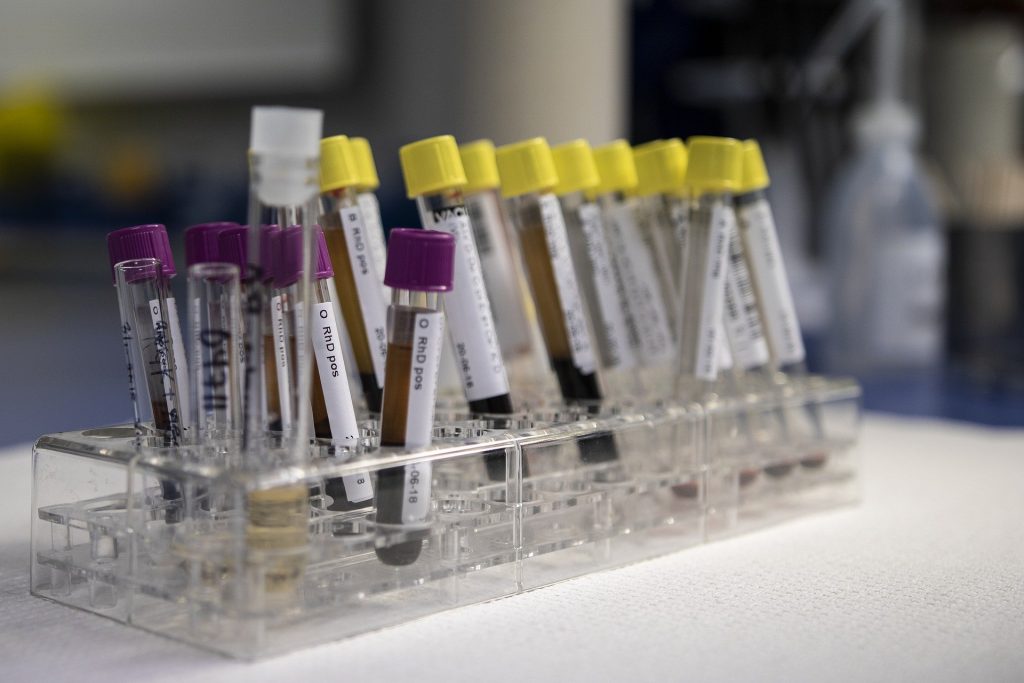
Blockchain technology is redefining the healthcare industry on a rapid scale. The industry is embracing Blockchain with open arms in the area that proves vital in a patient’s life – that of blood transfusion. Right from the phase of blood donation involving various entities in the process, Blockchain is serving one purpose – ensuring that a patient gets safe blood!
Blood transfusion
Human blood has no substitute. It cannot be manufactured and is invaluable to one’s life. Blood donation is common but what about blood transfusion? What are the stages involved in a blood bank system? Who all are the entities?
In a nutshell, let’s understand the concept first. A blood transfusion is a medical procedure that gives healthy blood to you via an intravenous line (IV line) that is inserted in one of your blood vessels. All the safety measures are taken meticulously matching medical parameters. However, even a minutest of carelessness might cost a life. So, blood transfusions, being a common medical procedure, is one of the most challenging ones that may save or take a patient’s life. The traceability and accountability of blood suffer when its travel span makes the donated blood travel thousands of miles from donor to receiver. Chances are high that blood becomes contaminated which can prove fatal to a patient’s life. Thus, Blockchain supports the monitoring as well as traceability parts from a donor to patients by providing a complete transaction system history of each of the blood bottles through their unique tracking identities.
Blockchain Benefits
1. A smart blood chain system
The system is a Blockchain application on a mobile phone that helps to mobilize blood donations from scratch to finish, i.e., involving various entities. Blockchain helps in the monitoring as well as traceability aspects from the original donor to the real-life patients. It records all transactions in the chain–donor registration, collection of the sample, sample testing, its storage, its requisition, and finally the transfusion. Blockchain connects all the entities involved in the cycle of blood supply management – the donor, the test center, the blood bank, and finally the hospital.
2. Blood Supply Chain
Blood donated travels a rather complex blood- supply chain network to reach the exact patients. Blood- units travel even thousands of miles and the purity of blood suffers due to various external forces. It may result in contamination. The main goal or objective of the Blockchain technology is to provide safe (without any contamination) blood to the patients concerned. This is possible by verifying different identities in the chain. Verifying identities ascertain its expiry date, thereby making Blockchain a trusted technology in the area of blood transfusion. Thus, the quality of blood can be assessed by just knowing any node in the chain!
3. Vein to vein, blood monitoring
Blockchain does encoding of data in a very secure and transparent way. It adds security and visibility to the entire blood supply management chain. The details of the respective identities, about the blood, are taken at various key points –
- At the time of blood donation by the donor at a collection facility
- When the test is done on the blood sample just collected, and then putting the result on record
- When blood is processed consisting of red blood cells(RBCs), platelets, plasma
- When these blood constituents are stored in an inventory
- When a vehicle/logistic support transports this blood sample to the hospital
- When the hospital gives blood transfusion to a patient using the very registered product
- And finally, when the leftover blood is disposed of by the hospital right away after its use.
4. Tracking donor history
The blood bank or the organizer can see the medical history as well as the donation history of a particular donor. That’s possible because of the Blockchain’s unique identity given to that donor that is a-hundred-percent tamper-proof.
5. Blood traceability
Tracing of the entire life cycle of blood donations, every unit of blood, is possible using Blockchain. It works this way – the lifecycle of a blood bag is prepared by deriving physical and digital data from the life cycle of a patients’ data collection, his blood analysis, and collection reports, etc. The bag is given a unique #QR code for identification. Once the data are validated by Smart Contracts, they are entered into Blockchain. Thereafter, the system becomes full-roof. This way, data integrity, and data immutability are highly ensured across the blood value chain.
Blockchain – a lifesaving technology
Thus, we have seen the technological benefits of Blockchain in blood transfusion where Blockchain acts as a life-saver to all those patients whose life do stuck on a thin line of ‘a safe blood transfusion’. The envisaged benefits of Blockchain are that the quality, availability of blood is quite visible, to all the stakeholders, who in turn, too, become the participants in the Blockchain network. No doubt, when we put Blood on the Blockchain, it offers a significant health service, transforms the way blood reaches all those who need it. It’s all about safe blood, timely transfusion!
Do you want to know how Blockchain technology can become a powerhouse for your business? We can help you. Connect to us at www.fusioninformatics.com
Read Also – Top Mobile App Development Companies in India




